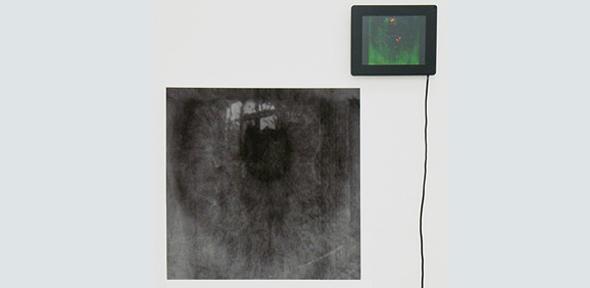
An apocalypse unfolds before the viewer’s eyes, as microscopic dots appear, combine and ‘consume’ a work of art: digital artist Joseph Nechvatal destroys digital representations of his paintings by unleashing a computer virus that ‘gnaws away’ at his creation in real-time and, to do so, he collaborates with programmer Stéphane Sikora.
Many artists like Nechvatal have embraced the benefits of working both digitally and collaboratively to create innovative pieces. The 52-member Intercontinental Music Lab, for instance, creates music that is inspired, arranged and written by different band members without them ever having to meet. “We all understand that the completed song can’t exist without this collective creative input,” explained founding partner Barney Brown.
But what are the implications of collaboration when it comes to deciding who the author of the work is, and who owns the rights to control its use? “The premise is that the digital world is changing both the way people create works and what they create,” explained Professor Lionel Bently from Cambridge’s Faculty of Law. “While there have been many responses from copyright law to the possibility for copyright infringement, there has been very little in terms of rethinking the fundamental concepts – who is the author and what constitutes the work they have created?”
A team of researchers from the Universities of Cambridge (led by Bently), Amsterdam and Bergen is now reaching the completion of a three-year research project that is scrutinising these notions.
Funded with €1 million by HERA, the study is drawing on insights from humanities disciplines to offer a new understanding of copyright norms that can support the continuation of creative collaboration in the digital environment.
“Copyright is often criticised for being rooted in a solitary notion of authorship,” explained lawyer Dr Elena Cooper, who has interviewed 18 digital artists and poets, including Joseph Nechvatal, as part of the project. “The assumption is that creative practices using digital technology radically challenge that concept. The interviews revealed that authorship remains an important concept in the digital age, though there is a real diversity in its meaning, spanning not just collaborative notions, but also solitary ones.
“Moreover, we often think of large-scale multi-author ventures like Wikipedia as being newly enabled by digital technology. But the 70-year process of compiling the Oxford English Dictionary, instigated by the Philological Society in 1857, reveals that large-scale collaborations also existed in the 19th century. This was a process that involved the contribution of thousands of volunteer readers, sub-editors and assistants, alongside the salaried editors.”
Cooper’s research in the archives of Oxford University Press and the University of Oxford’s Bodleian Library is revealing a treasure-trove of correspondence that documents what lawyers, unpaid contributors and Philological Society members understood about the copyright implications of the involvement of masses of contributors. Looking at the solutions proposed in the 19th century, she commented: “we may well be able to learn from this experience today.”
Cooper and philosopher Dr Laura Biron are also asking whether ideas about the philosophy of art can help copyright identify the author in cases where many have contributed. “We are examining what institutional theories of the late 20th century say about authorship,” Cooper explained, “and how a new definition based on the role, authority and intent of the artist could help copyright lawyers navigate their way through the competing claims of multiple contributors. This is an intersection between philosophy and law that has not been previously considered.”
In a digital world, literature, art and music are often the result of collaborative efforts. But who owns what, and can copyright law cope? New research aims to find out.
This work is licensed under a Creative Commons Licence. If you use this content on your site please link back to this page.
